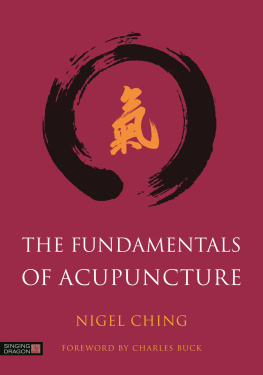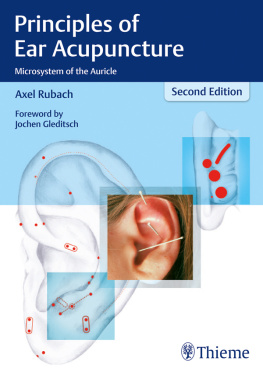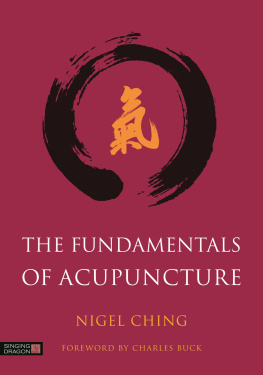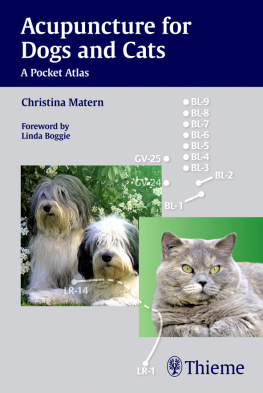Contents
Pagebreaks of the print version
The 361 Classical Acupuncture Points
Names, Functions, Descriptions and Locations
Other Related Titles from World Scientific
Acupuncture Understood: Rediscovering Traditional Five Element Healthcare
by Stuart Lightbody
ISBN: 978-981-4583-77-0
ISBN: 978-981-4583-78-7 (pbk)
Acupuncture: Theories and Evidence
edited by Hong Hai
ISBN: 978-981-4452-01-4
Evidence-Based Acupuncture
edited by Tang-Yi Liu and Ping-Chung Leung
ISBN: 978-981-4324-17-5

Published by
World Scientific Publishing Co. Pte. Ltd.
5 Toh Tuck Link, Singapore 596224
USA office: 27 Warren Street, Suite 401-402, Hackensack, NJ 07601
UK office: 57 Shelton Street, Covent Garden, London WC2H 9HE
Library of Congress Cataloging-in-Publication Data
Names: Lightbody, Stuart, author.
Title: The 361 classical acupuncture points : names, functions, descriptions and locations / Stuart Lightbody.
Other titles: Three hundred sixty one classical acupuncture points
Description: Hackensack, NJ : World Scientific, [2020] | Includes bibliographical references and index.
Identifiers: LCCN 2019036813 | ISBN 9789811201257 (hardcover)
Subjects: MESH: Acupuncture Points
Classification: LCC RM184.5 | NLM WB 369.5.M5 | DDC 615.8/92--dc23
LC record available at https://lccn.loc.gov/2019036813
British Library Cataloguing-in-Publication Data
A catalogue record for this book is available from the British Library.
Illustrations copyright Dave Pugh 2018
All rights reserved. No illustrations may be reproduced, stored in a retrieval system, or transmitted in any form or by any means, electronic. Mechanical, photocopying, recording or otherwise, without prior permission of the copyright holder.
Copyright 2020 by Stuart Lightbody
All rights reserved.
ISBN 978-981-120-125-7
For any available supplementary material, please visit
https://www.worldscientific.com/worldscibooks/10.1142/11307#t=suppl
Typeset by Stallion Press
Email:
Printed in Singapore
May the spirit of the Dao spread far and wide
Disclaimer
It is the responsibility of the practitioner, relying on experience and knowledge of the patient, to make diagnoses and to formulate the best treatment for each individual patient and to take all appropriate safety precautions. To the fullest extent of the law, neither the publisher nor the author assumes any liabilities for any injury and/or damage.
About the Author
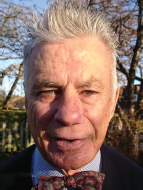
Stuart Lightbody holds a Licentiate, Bachelor and Masters qualification in Classical Acupuncture and is a member of The British Acupuncture Council (Overseas) and has been in practice since 1979. He was a member of the teaching faculty at the College of Traditional Acupuncture from 1982 to 1992.
He has written extensively on Preventive Medicine and Acupuncture for the Daily Express and is the author of Acupuncture Understood: Rediscovering Traditional Five Element Healthcare (World Scientific).
He is the Acupuncture contributor to Mens Health Matters (Vermilion/Ebury Press), the Hamlyn Encyclopaedia of Complementary Health and The Hamlyn Encyclopaedia of Child Health (Reed International Books Limited).
Contents
Foreword
For a student of Acupuncture, the mid 70s were a time of discovery, wonderment and exhilaration as a whole new perspective on life and the inner workings of the human being was placed before us. The syllabus at the College I attended was a work in progress, and although improvements were continually being made it was still somewhat haphazard in its modus operandi and would bear little resemblance to the well regulated colleges we have today. However a strong sense of purpose prevailed and, with it, a sincere desire to bring into the public domain this wonderful system of medicine.
The course included influences from past teachers such as Soulie de Morant, Jacques Lavier, Felix Mann, Roger de la Fue (de la Filye), and Wu wei-ping and bringing it all alive were the lectures by Professor JR Worsley whose emphasis on the importance of the Spirit of the Points and the need to understand and treat the patient at the deepest level shone through.
It was during these times that a seed was planted in my mind for this book and, although it has taken several decades for it to come to fruition, its purpose still remains the same: to provide a valuable contribution to the Acupuncture world, especially its students and practitioners, as they strive in their noble endeavour to serve the needs of their patients. It is to them that this book is dedicated.
In it I have tried to crystallise the wisdom and knowledge from the past and, together with my own experiences, to provide insight into the meaning of the Points, their position on the body and their effects upon the body, mind and particularly the spirit of the patient.
Because of the condensed nature of the text and therefore its limitations, space has been allocated within each Point section so that the student/practitioner may record their own insights, understandings, observations and reflections with regard to their effects. The information in it should only be used in accordance with pulse findings and other traditional methods of diagnosing the root cause of the patients energetic imbalance. It is not intended as a symptomatic substitute for the holistic approach. A sincere respect, appreciation and understanding of these Points seems to me essential in bringing about that unique connection between the heart of the practitioner and their patient. Guo Yu(Kuo Yiu), a physician from the Han dynasty, puts this understanding well when he states that the word medicine embodies the idea of attention .... a kind of spirit connects the physicians heart with their hand and this is something I know but cannot explain.
The dedicated Acupuncture practitioner who has the privilege to access these inner treasures should not take that good fortune lightly. Just one Point can change a persons life for the better it happened to me in 1975 and I am still very thankful for that.
Stuart Lightbody
Acknowledgements
Sincere thanks and acknowledgements go to those teachers at what was then the College of Chinese Acupuncture (UK) and to its founder Professor J R Worsley. Those teachers included David Arditti, Meriel Darby, Angela and John Hicks, Julia Measures, Peter Mole, Allegra Wint, Judy Becker Worsley, and Ron Wray.
Thanks also go to Richard Bertschinger, Pam Bone, Peter Eckman, Alan Hext, Linda Howden, Claude Larre, Bill Mueller, Stephen Paul, Elizabeth Rochat de la Valle, Beryl Williams and to those Acupuncture luminaries from antiquity whose wisdom and knowledge in the form of their texts, odes, commentaries and treatises continue to inspire and educate us today.
A special debt of gratitude, however, goes to Dr Leanne Langlois whom I was extremely fortunate to meet whilst part-way through gathering information on each of the 361 Points. It is because of the specialist knowledge gained from her Doctorate qualification in Physiology, her years as an acupuncture practitioner and Point location teacher, together with her formidable attention to detail, that the pictorial accuracy and verbal descriptions of the Point locations are of such a high standard. This, combined with the excellent graphics produced by Dave Pugh, has helped create a wonderful resource for both student and practitioner irrespective of the tradition studied.


![John Urbanski D.C. - Acupuncture Meridian Point Locations Atlas [fixed Toc and Links]](/uploads/posts/book/281557/thumbs/john-urbanski-d-c-acupuncture-meridian-point.jpg)

